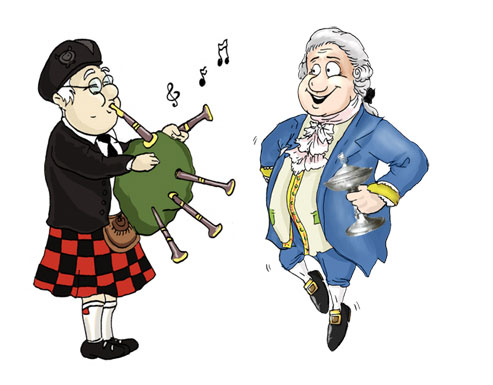
Early & Medieval silver made in Scotland was highly influenced by their Celtic cousins, the Irish. As time progressed designs from the continent were more influential then those from England.
In 1457 a statute was passed to guarantee the purity of silver and gold. This early silver standard was divided into 12 parts with at least 11 being pure silver or 91.6 % (sterling is 92.5%).
In1485, Edinburgh gold and silversmiths petitioned to regulate their craft with a town mark (castle), Deacon’s mark (assayer) and maker’s mark. In 1555, during the reign of Queen Mary, a date letter was also added.
From 1720 onward, the sterling standard was required on all silver made in Scotland. In 1759, the “Thistle” replaced the deacon’s mark guaranteeing the silver quality.
The other major silversmithing center was Glasgow, and from 1536 until 1681, silversmiths were part of the “Hammermen” guild. In 1681, a date letter and town mark (fish, tree & bell), along with a maker’s mark were instituted. In 1819, an assay office was set up in Glasgow with the “Rampant” lion guaranteeing the silver purity and the sovereign’s head showing that the duty (tax) had been paid. The other Scottish cities set up their own guilds and only adopted a town and maker’s marks. Many Provincial Scottish silversmiths sent their wares to Edinburg and Glasgow to be assayed and hall marked.

